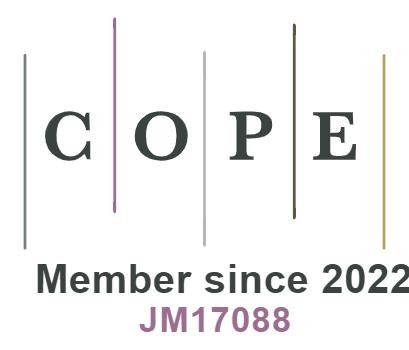REFERENCES
1. Personalname=Teoh A. The ATNF Pulsar Database. Available from http://astronomy.swin.edu.au/~vmorello/.
2. Keith MJ, Jameson A, Van Straten W, et al. The High Time Resolution Universe Pulsar Survey - Ⅰ. System configuration and initial discoveries. Monthly Notices of the Royal Astronomical Society 2010;409:619-27.
3. Eatough RP, Molkenthin N, Kramer M, et al. Selection of radio pulsar candidates using artificial neural networks. Monthly Notices of the Royal Astronomical Society 2010;407:2443-50.
4. Shamsolmoali P, Chanussot J, Zareapoor M, Zhou H, Yang J. Multipatch feature pyramid network for weakly supervised object detection in optical remote sensing images. IEEE Trans Geosci Remote Sensing 2022;60:1-13.
5. Bates S, Bailes M, Barsdell B, et al. The high time resolution universe pulsar survey—Ⅵ. An artificial neural network and timing of 75 pulsars. Monthly Notices of the Royal Astronomical Society 2012;427:1052-65.
6. Morello V, Barr E, Bailes M, et al. SPINN: a straightforward machine learning solution to the pulsar candidate selection problem. Monthly Notices of the Royal Astronomical Society 2014;443:1651-62.
7. Zhu W, Berndsen A, Madsen E, et al. Searching for pulsars using image pattern recognition. ApJ 2014;781:117.
8. Lyon RJ, Stappers B, Cooper S, Brooke JM, Knowles JD. Fifty years of pulsar candidate selection: from simple filters to a new principled real-time classification approach. Monthly Notices of the Royal Astronomical Society 2016;459:1104-23.
9. Lyon RJ, Brooke J, Knowles JD, Stappers BW. A study on classification in imbalanced and partially-labelled data streams. In: 2013 IEEE International Conference on Systems, Man, and Cybernetics. IEEE; 2013. pp. 1506–11.
10. Hewish A, Bell SJ, Pilkington JD, Scott PF, Collins RA. 74. Observation of a Rapidly Pulsating Radio Source. In: A Source Book in Astronomy and Astrophysics, 1900–1975. Boston: Harvard University Press; 2013. pp. 498–504.
11. Lyon RJ, Brooke J, Knowles JD, Stappers BW. Hellinger distance trees for imbalanced streams. In: 2014 22nd International Conference on Pattern Recognition. IEEE; 2014. pp. 1969–74.
12. Shamsolmoali P, Zareapoor M, Granger E, et al. Image synthesis with adversarial networks: a comprehensive survey and case studies. Inform Fusion 2021;72:126-46.
13. Guo P, Duan F, Wang P, et al. Pulsar candidate classification using generative adversary networks. Monthly Notices of the Royal Astronomical Society 2019;490:5424-39.
14. Radford A, Metz L, Chintala S. Unsupervised representation learning with deep convolutional generative adversarial networks. arXiv preprint arXiv: 151106434 2015.
15. Zhang CJ, Shang ZH, Chen WM, Xie L, Miao XH. A review of research on pulsar candidate recognition based on machine learning. Pro Compu Sci 2020;166:534-38.
16. Arjovsky M, Chintala S, Bottou L. Wasserstein generative adversarial networks. In: International conference on machine learning. PMLR; 2017. pp. 214–23.
17. He K, Zhang X, Ren S, Sun J. Deep residual learning for image recognition. In: Proceedings of the IEEE conference on computer vision and pattern recognition; 2016. pp. 770–78.
18. He K, Zhang X, Ren S, Sun J. Identity mappings in deep residual networks. In: European conference on computer vision. Berlin: Springer; 2016. pp. 630–45.
19. Bousquet O, Gelly S, Tolstikhin I, Simon-Gabriel CJ, Schoelkopf B. From optimal transport to generative modeling: the VEGAN cookbook. arXiv preprint arXiv: 170507642 2017.
20. Goodfellow I, Pouget-abadie J, Mirza M, et al. Generative adversarial networks. Commun ACM 2020;63:139-44.
21. Radford A, Metz L, Chintala S. Unsupervised representation learning with deep convolutional generative adversarial networks. Computer ence 2015.
22. LeCun Y, Boser B, Denker JS, et al. Backpropagation applied to handwritten zip code recognition. Neural Computation 1989;1:541-51.
24. Kingma DP, Ba J. Adam: a method for stochastic optimization. arXiv preprint arXiv: 14126980 2014.
25. He K, Zhang X, Ren S, Sun J. Delving deep into rectifiers: Surpassing human-level performance on imagenet classification. In: Proceedings of the IEEE International Conference on Computer Vision; 2015. pp. 1026–34.







